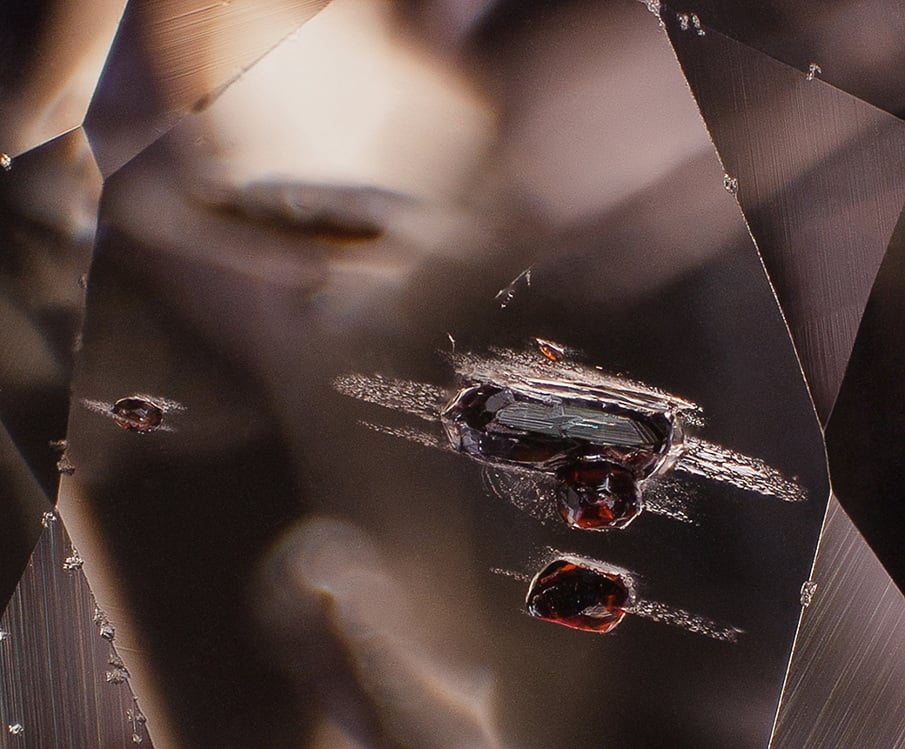How to Orient Sapphires with Silk Inclusions
Silk inclusions in sapphires are hard to detect. Learn to pick the best orientation and cut for these gems. You might end up with a prize star sapphire.
2 Minute Read
I thought this gem was perfect for a Barion emerald cut with the baby-blue axis. Now I'm not so sure. Would it be better to go with the lavender axis, where the inclusions are not as noticeable? I always thought silk inclusions would be more obvious and make the stone opaque. Or is this what is referred to as the velvet-like texture of Kashmir sapphires?
Answer: You just discovered silk inclusions, microscopic rutile crystals that developed inside the gemstones. You've also discovered why most corundum gems (rubies and sapphires) are routinely heat treated.
Should You Treat a Sapphire with Silk Inclusions?
Common inclusions in corundum gemstones, silk inclusions are often hard to see before polishing and can take the stone down several grades. However, I wouldn't recommend having it treated. Most treaters only do batches, and each gemstone is different. It takes a fair amount of experimentation to find the right combination of stones for a batch. To have an individual piece treated is very chancy.
Choosing Whether to Cut a Star Sapphire
While the appearance of silk can lower the value of sapphires, the rutile crystals can also create the "star stone" or asterism effect. Star sapphires are highly prized.
As far as which axis to go with, do you have a polished window on the baby blue c-axis? If so, put a tiny drop of oil on it. Then, hold it under a downward facing lamp. Look carefully to see if there is a star on the oil. (It might be very hard to find). If you find a star, your best bet would be to cut a star gemstone. A transparent, blue star sapphire is a prize!
If you don't see a star, I would go with the direction of best transparency. The silk inclusions will give a muddy color to the stone and it can look a lot worse after faceting.
Silk inclusions can be microscopic and opaque. The real trick is judging if a sapphire has enough silk to star or not. That's something that only experience can teach.
What you're describing doesn't sound like velvet. Kashmir sapphires are full of invisible inclusions that leave them a bit less than fully transparent.
Donald Clark, CSM IMG
Follow-Up Questions
Thanks for the information. I have some more questions. I tried the oil trick but I'm not sure if it has a star. It may have an eye. The obvious reflecting silk inclusions are on a 45º angle with the 8mm axis. There are 19 lines that I can count with a 10X loupe. Maybe that's not enough to make a good star?
Answer: OK, if you're looking down the c-axis, the silk inclusions will form a hexagon. If you're only looking at part of it, you will see it meeting at 60º angles. However, if you orient the top of the stone to the c-axis, you will get a star. If you orient it to one of the long axes, it will cat's eye and not be worth nearly as much.
Testing for a Star
A stone can star with only microscopic silk inclusions, not just what you can see. That is why there are transparent star stones. Finding a star with the oil trick is very hard, but always try it first.
The next step is to gently smooth and round out all the sides of the stone. Try not to remove anything that wouldn't be cut away anyhow. Give it at least a 1,200 finish, then coat it with oil. Now take the stone out into the sun (preferably) or under a bright light. Look at it from several directions. If the stone will star, you will see a partial star on one of the rounded surfaces. Orient the stone in that direction. What you see will also give you an idea of the intensity of the star. If it's weak, the gem probably isn't worth cabbing.
Donald Clark, CSM IMG
International Gem Society
Related Articles
Rutile Value, Price, and Jewelry Information
Sapphire Value, Price, and Jewelry Information
Corundum Value, Price, and Jewelry Information
What is the Best Lap for Polishing Sapphire?
Latest Articles
Opal Buying Guide
Amethyst Sources Around the World: The Geological Story Behind These Purple Gemstones
Brazilianite Value, Price, and Jewelry Information
Ruby-Glass Composites vs Leaded Glass Clarity Enhancements
Never Stop Learning
When you join the IGS community, you get trusted diamond & gemstone information when you need it.
Get Gemology Insights
Get started with the International Gem Society’s free guide to gemstone identification. Join our weekly newsletter & get a free copy of the Gem ID Checklist!
